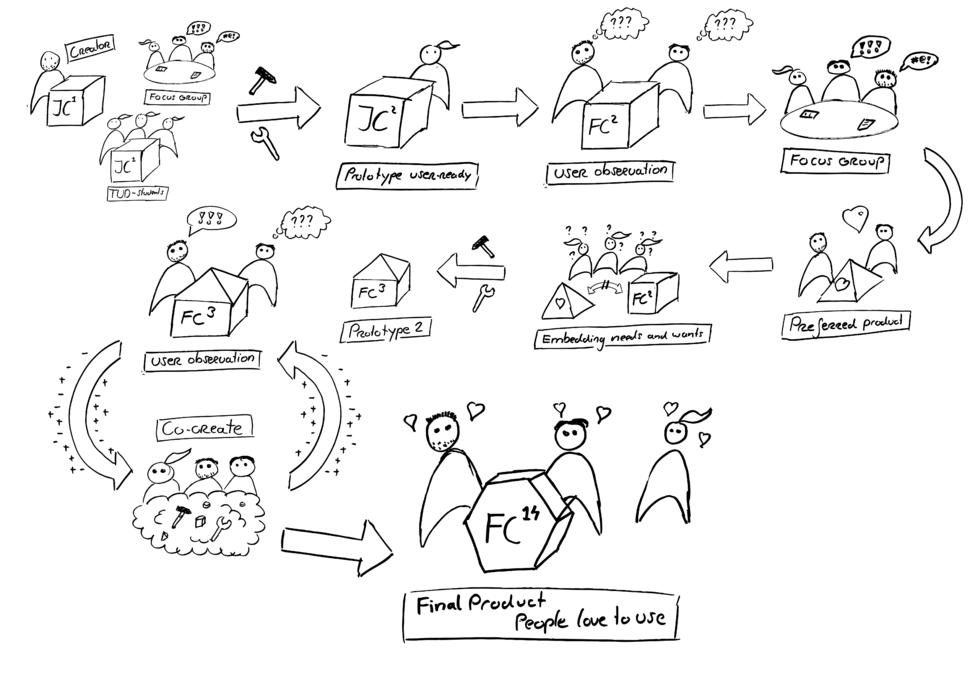Prepare
At this point, the current prototype of the Fortune Cooker is not yet suited for testing; there are too many actions that can’t be completed without an extensive manual. Therefore, we will test the product ourselves first, after which we will develop a prototype that is suitable for testing.
Simultaneously, we will do research on the user needs concerning cooking and all the activities associated with cooking. The user needs will be identified using two methods: the Krutus (Blom, 2015) and either the Focus Group or an interview(descriptions in appendix 5&6). The Focus Group has the objective to give a better understanding of what the users think and feel of selected - cooking related - topics. The ‘why’ and ‘how’ questions are important here. The Kroetoes will give insight in the desires and dreams of the users. If possible, we will try to implement findings of this research in the first prototype as well.
Testing & designing
Once the first prototype is ready for use, we will test it with our targeted user group directly. There’s a great chance that the users won’t use the prototype as we intended it to, but this is what this first test is for. By jumping in the deep at once, we can see what the user’s intuitive actions are. We will identify these by using the method User Observation (appendix 7).
After the first test, a second Focus Group can identify what the conscious experiences of the user where, if they have specific wishes for the product, and whether their opinion on cooking in general has changed now that they know of the Fortune Cooker.
By combining the results of the Kroetoes, Focus Group 1, Focus Group 2 and the first user test, it possible make to make a description of what would be the ‘ideal product’. However, does this ideal product fit with the technical properties of the product? This is a where a new design phase starts. The ideal product and the technical product have to be combined into one viable product. During this process, it might be needed to perform small user tests, mainly focussed on the intuitiveness of the actions that have to be performed. The result of this second design phase is a new prototype that can be tested on the same users again. By testing on the same users as well as on new users we establish a process of co-creation: the users see their advice and experience implemented in a new prototype. This helps to them to trust the end product, but it also keeps the project interesting.
This test is followed by a next one with an iterated prototype, then another with the next version of the prototype, etcetera, etcetera, until we have a product the users and the designers believe in.
Analyse
The final product we have discussed before is designed to
be suitable to the women living in rural Morocco. There’s no guarantee at all that it will work in another environment. For a successful continuation of the project, it is needed to analyse the extend in which the product is based on habits and needs specifically for the women in rural Morocco. What aspects of the product are essential for the performance of the product, and which aspects could be altered in order to make the product suitable for a different target group? An outcome could also be that the product cannot be altered to another target group without losing performance.
